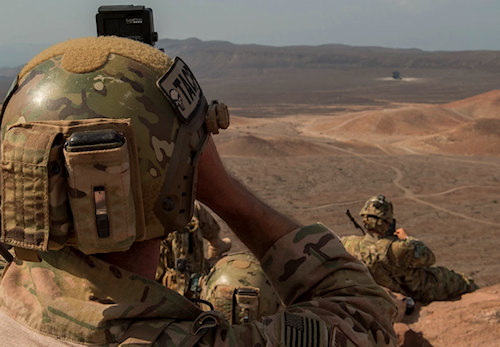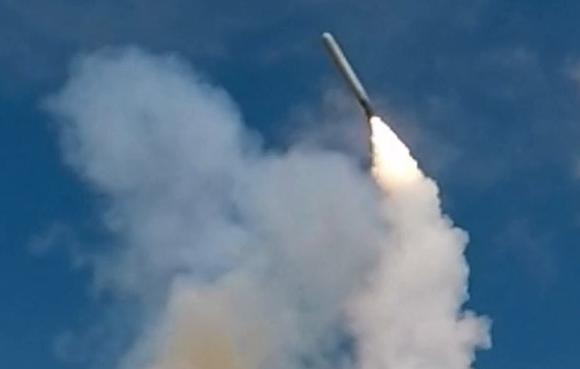Plan and execute an operation to suppress missile and/or drone launch sites, It's not something that can be improvised. Identifying the launch zones even with good approximation is absolutely not enough, especially in a "mixed" context like the Yemeni one, made up of deserts, including mountainous ones, and cities that are essentially still of a medieval type, made of earth, stone and wood.
The Houthis have good camouflage options, and detection and tracking occurs almost only after the launch, which will certainly be of a multiple type, with an almost immediate escape. All in all, a fairly complicated affair. A far from simple matter, especially if you don't have multiple attack technique options.
We must return to the doctrines developed by Gen. Warden of the "Checkmate" facility that we mentioned in the article "The right man in charge". Elaborated through the harsh lessons of the war in Vietnam where, to bomb a bridge or a road intersection along the Ho Chi Minh trail, kilometers and square kilometers of territory were destroyed (perhaps even missing the target).
Checkmate gave rise to the design of new weapons guided by laser, antiradar, electronic and infrared identification, which led to modern aerial bombing tactics.
In a context like the Yemeni one, I do not consider the possibility of processing radar and/or infrared data to be favourable, while I am leaning towards electronic detection (radio-telephone frequencies, electromagnetic pulses of particular electric motors) and much towards laser detection, to be carried out " in the field" (such as the difficult reconnaissance and identification missions of Iraqi Scud ramps during the first Gulf War, or the designation of targets in urban areas by secret service operators, which has been discussed extensively, perhaps too much This is also to limit collateral damage to civilians, for political reasons.
 So, how do you do it?
So, how do you do it?
Someone has to "illuminate" the targets directly.
Who?
The special forces.
How?
Spotting with laser markers.
Which?
The SAS. Indeed, the SAS: English, Canadian, Australian.
How did they get there?
They infiltrated from Oman, where the SAS has had advanced bases, garrisons and guerrilla training centers in the desert for decades (for those wishing to delve deeper into the topic "geographically", I suggest rereading the 2017 Online Defense article on Battle of Mirbat). Assets of the Seals or Recon Marines stationed in Djibouti (Camp Lemonier) may also have participated, and therefore exploited the coasts.
The teams illuminated targets for US and UK aircraft based in Cyprus and the Middle East (and perhaps even in Diego Garcia) and for the US Navy deployed in the Persian Gulf, and nearby (aircraft carriers USS Dwight D. Eisenhower e USS Florida, armed with missiles Tomahawk).
UCAV were certainly also present in the area (unmanned combat aerial vehicle) for reconnaissance and attack, all coordinated by at least one flying station, with more LIDAR than RADAR capabilities.
This is planning and execution that usually takes days, not hours. However, the general scheme was certainly foreseen for some time.

Two other important activities must also be processed: Temporarily nullify the capabilities of Iranian radars (and perhaps not only theirs) that are located across the Strait of Hormuz and on ships patrolling in the Persian Gulf and Aden.
Blinding enemy radars (presumably of the Russian and Chinese type) is essential for various reasons: not giving any warning to the Houthis, who are most likely in possession of shoulder-mounted SAMs and large-caliber Russian mobile machine guns, as well as not allowing enemy radar technicians to “see” their attack tactics, denying valuable electronic information for possible future use.
The exfiltration of the teams must also be planned, in the event of an emergency and/or after the fact.
Last but not least, give a message to more than one player on the pitch: "We'll pick you up whenever and however we want, anywhere!".
This does not mean that NATO naval and land forces deployed in the Persian Gulf are omnipotent and/or invulnerable: "if history has taught us anything it is that you can hit anyone" said a man.
A clear signal was sent to the "competition": If you want to play for us that's fine! And it won't be just you who dictates the rules, times and methods.
Do we then want to talk about Italy's role in the context? Perhaps it is better to draw the classic veil of compassion.
Photo: U.S. Navy / U.S. Air Force












